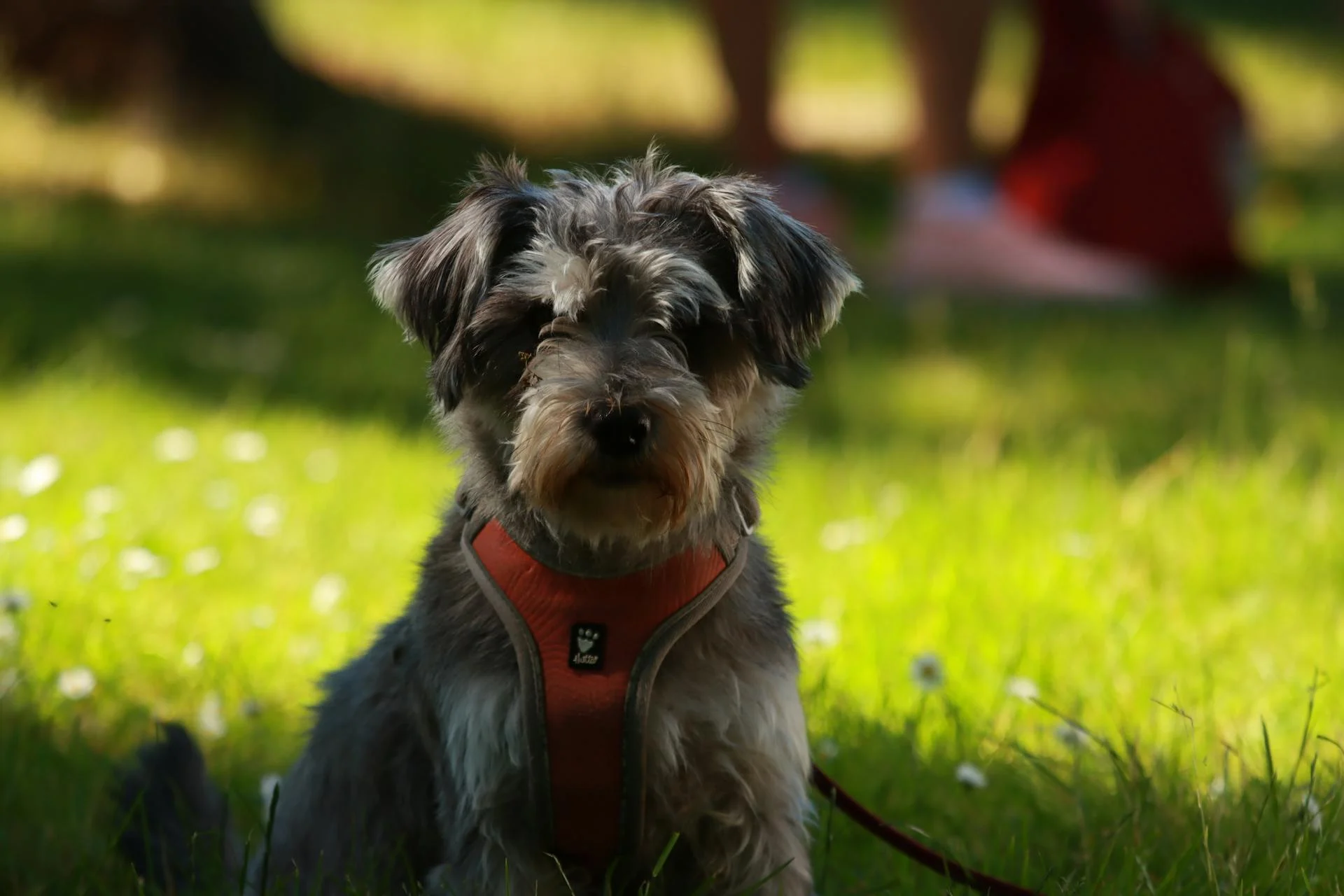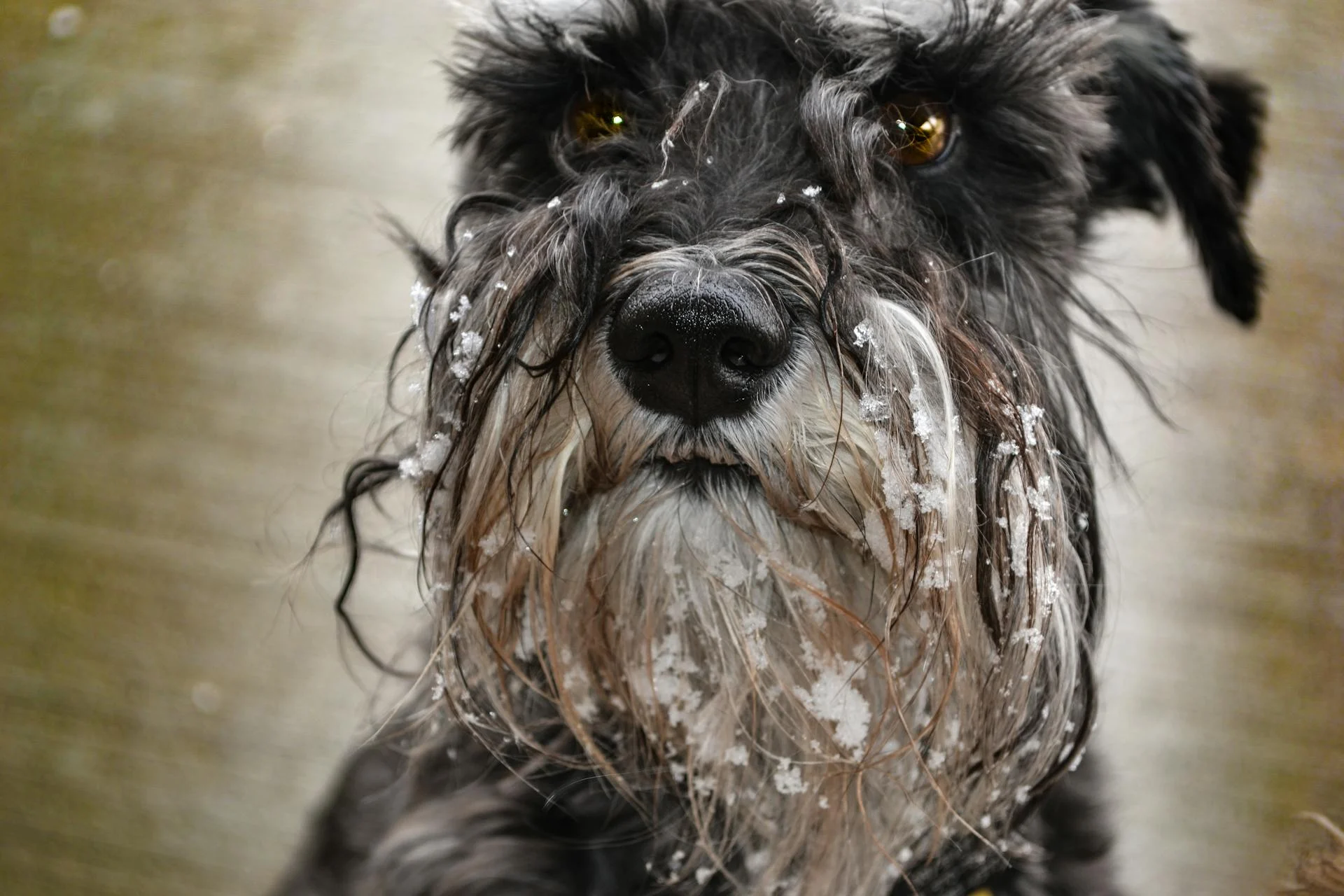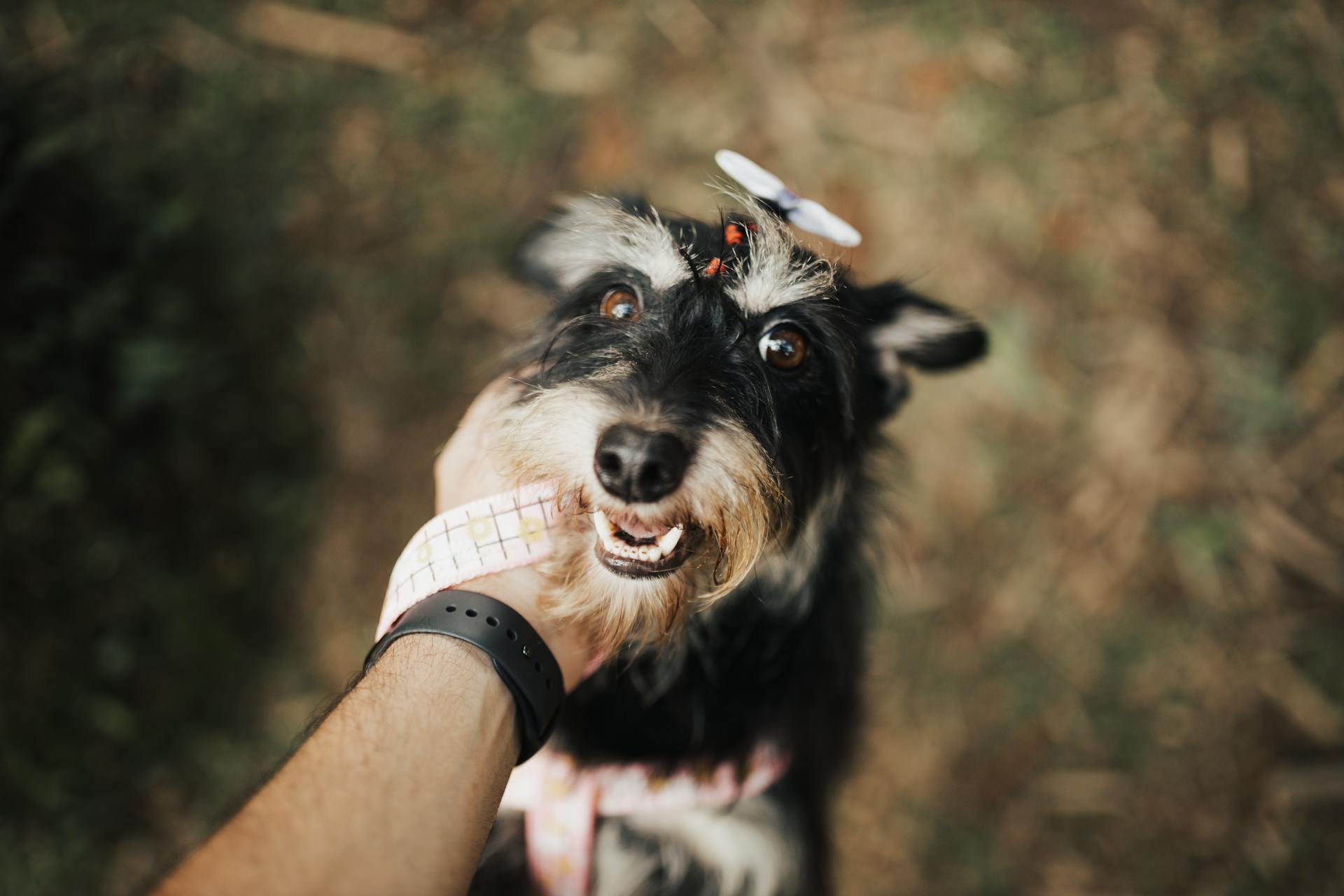
The Standard Schnauzer is a versatile and intelligent breed that originated in Germany over 400 years ago. They were initially bred to hunt small game such as rabbits and rodents.
These dogs are known for their distinctive beards and eyebrows, which give them a unique appearance. Their coats come in three main colors: salt and pepper, black, and white.
Standard Schnauzers are highly energetic dogs that require regular exercise to stay happy and healthy. They need at least 30 minutes of moderate-intensity exercise per day, such as walking or running.
Characteristics and Temperament
The Standard Schnauzer is a breed that's known for its intelligence and energy level. They're warm and affectionate dogs, but they need regular exercise and mental stimulation to prevent boredom.
They have a high affection level and are great with kids, making them an excellent family pet. However, they can be wary of strangers and may require time to warm up to new people.
A Standard Schnauzer's intelligence is one of its most notable traits - they're often referred to as "the dog with the human brain." They're highly trainable and can learn new commands quickly, but they do need consistent leadership and training from an early age.
Here are some key characteristics of the Standard Schnauzer breed:
Standard Schnauzers are naturally protective of their family and territory, but they can be trained to be gentle and calm with proper socialization. They're also highly energetic and need regular exercise to stay happy and healthy.
Overall, the Standard Schnauzer is a loyal and loving breed that makes an excellent companion for active families or individuals.
History and Origins
The Standard Schnauzer has a rich history dating back to the Middle Ages when they were developed from herding, ratting, and guardian breeds in Western Europe.
They originated as a medium-sized dog used by peasant farmers for centuries, but it wasn't until the 19th century that they caught the attention of German dog fanciers who began standardizing their look and temperament for the show ring.
Their name "Schnauzer" comes from the German word for muzzle or snout, which suits them perfectly given their distinctive wiry beard. In fact, this feature became a defining characteristic of the breed as early as 1842 when they were still known as Wire-haired Pinschers.
The Standard Schnauzer was developed into three different breeds/sizes: Miniature, Standard (the original), and Giant, with the medium-sized schnauzer being the most popular. This size range makes them ideal for any activity, from taking goods to market to serving as a family companion.
Interestingly, the breed's reliability has been put to use in police work, bomb detection, and search and rescue work, including during World War I and II when they assisted the troops and worked with the Red Cross.
You might like: When Can You Mate a Female Dog
Care and Maintenance
The Standard Schnauzer is a smart and sociable breed that requires regular interaction with their human companions. They crave attention and need to be engaged in activities that stimulate both their mind and body.
A daily routine of exercise, training sessions, and playtime will help tire out your Standard Schnauzer. This breed needs an outlet for their energy, but when properly exercised, they are neither hyperactive nor lethargic.
Regular grooming is essential for the Standard Schnauzer's characteristic double coat. Brushing with a bristle brush, pin brush, slicker brush, and comb will help prevent matting and keep the eyebrows, beard, and leg feathering free of debris.
Hand stripping or clipping are two methods to approach grooming your Standard Schnauzer. While clipping is more common in the US, hand stripping can be a better option for maintaining the breed's natural coat texture.
Here's an interesting read: Shiba Inu to 1 Cent
Care
The Standard Schnauzer is a highly intelligent breed that needs plenty of exercise and mental stimulation. They require daily walks and playtime to keep them happy and healthy.
Their wiry double coat requires regular grooming to prevent mats and tangles. Brushing should happen every two to three days, and they only need one or two baths a month.
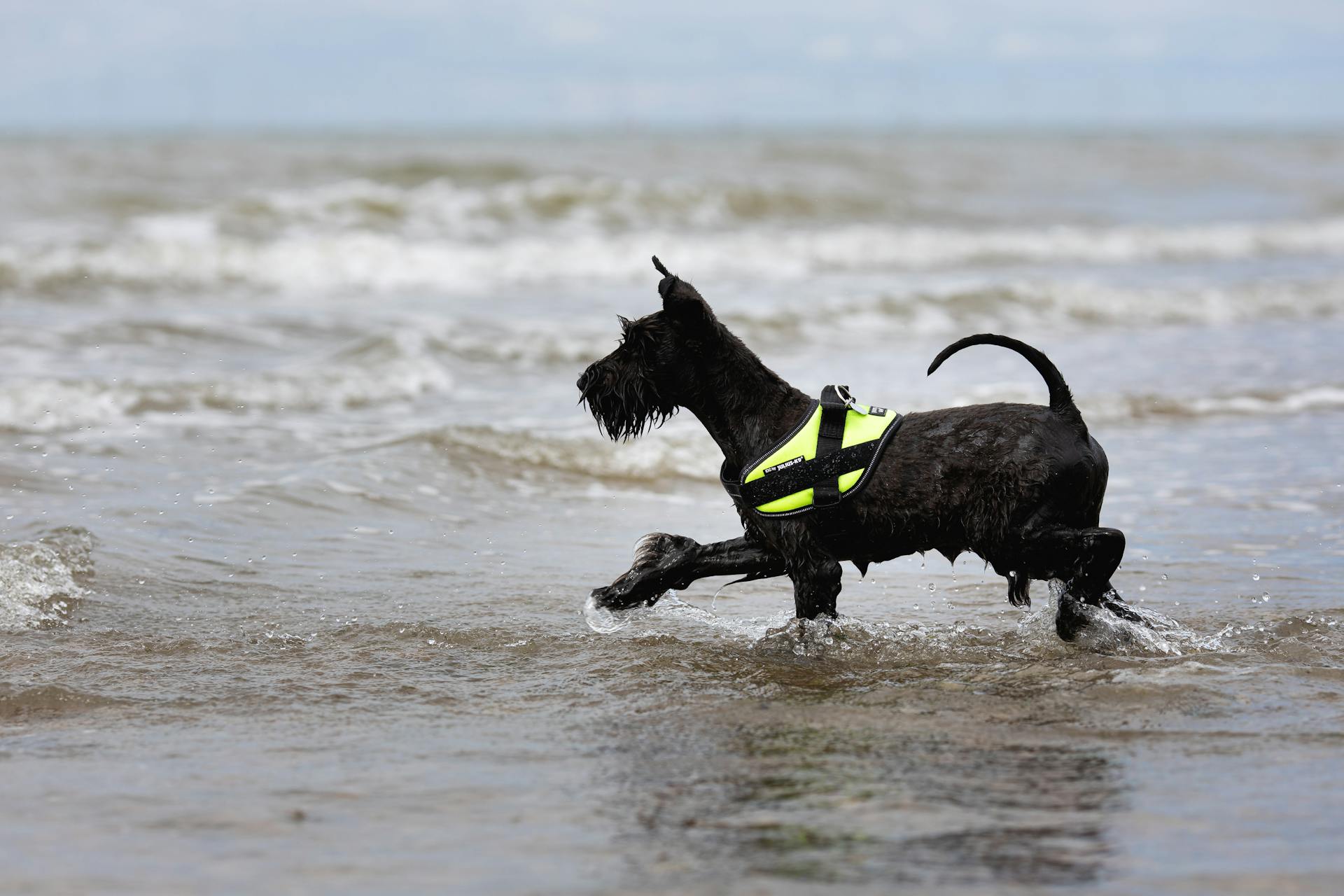
Standard Schnauzers are highly social dogs that thrive on interaction with their human companions. They crave attention and affection, so be prepared to spend quality time with them each day.
To keep their coat looking its best, you'll need to trim their nails every couple of weeks and brush their teeth every 2-3 days. Their ears should also be cleaned weekly to prevent infections.
A balanced diet is essential for the Standard Schnauzer's overall health. Feed them high-quality dog food and avoid overfeeding or giving too many treats, as this can lead to obesity and related health problems.
Grooming
The Standard Schnauzer requires regular grooming to keep its characteristic double coat looking great. Brushing with a bristle brush, pin brush, slicker brush, and comb is essential to prevent mats from forming.
Grooming your Schnauzer regularly will also help keep its eyebrows, beard, and leg feathering free of debris. You should wipe your Schnauzer's beard frequently to reduce odors and discoloration.
Related reading: Schnauzer Brush
Schnauzers are non-shedding dogs, but their hair grows continuously, making regular grooming a must. There are two ways to approach grooming: hand stripping or clipping.
Hand stripping involves plucking dead hairs by hand, which is a more labor-intensive process that may be difficult to find a professional groomer for. However, it's recommended by breed purists as it leads to slower hair re-growth and can last up to five or six months between sessions.
Clipping with clippers reduces the wiry top layer of fur, changing its color and appearance. This method requires more frequent grooming, with clipping sessions every six to eight weeks.
To get your Standard Schnauzer used to regular grooming, it's essential to start early, including getting them accustomed to having their paws handled and being around scissors and clippers.
Twice a year, when most breeds are shedding their coat, the Schnauzer's coat will become dull and easy to pull out. This is known as 'blown', and it's an ideal time for stripping or pulling out the old coat by hand.
Alternatively, you can clip their fur with shears, but this results in a loss of texture and fullness. Clipped coats are more prone to tangling and knots, especially when long, and become duller in color.
Regardless of whether you choose to strip or clip your Schnauzer's coat, the 'furnishings' – longer hair on their legs and face – need regular scissoring or clipping and daily brushing to prevent painful mats.
Related reading: Schnauzer Hand Stripping
Do They Get Along with Other Pets?
The Standard Schnauzer can be a bit challenging with other pets due to their guard dog instincts and prey drive. They're naturally intolerant and potentially aggressive towards dogs, especially if they haven't been socialized properly.
Raising them with another pet from a young age is ideal for a harmonious household. This helps them develop good manners and reduces the likelihood of conflicts.
Their prey drive can send them off like a bullet after smaller animals, including cats. Proper introductions and supervision are crucial when introducing new pets to your Standard Schnauzer.
A socialized dog, however, can easily accept a new family member with proper introductions. With patience and consistency, you can teach your Standard Schnauzer to coexist peacefully with other pets in the household.
Related reading: Lancashire Heeler News
Exercise and Training
Standard schnauzers need at least an hour of exercise daily, which can be broken down into one long walk and several shorter outings.
A standard schnauzer's recall is excellent, but use caution when letting them off-leash, as they may stray far if not in a fenced area.
These dogs make great jogging partners and are up for a hike. They also enjoy canine competitions like agility, rally, and obedience.
Schnauzers need mental stimulation, which can be provided through puzzle toys, searching for toys around the house, or participating in barn hunting.
Balancing exercise with training is crucial to prevent destructive behaviors or territorialism. A responsible owner will find their schnauzer blossoms into a wonderful companion.
Teach your kids how to properly approach and touch your standard schnauzer, and supervise interactions to avoid accidental hurt.
With the right ratio of exercise, training, and mental stimulation, standard schnauzers become loyal companions that are always happy to curl up on the couch.
If this caught your attention, see: Are Standard Schnauzers Good Guard Dogs
Health and Wellness
The Standard Schnauzer is generally a healthy breed with a long lifespan of 13-16 years or more.
One potential health concern is heart disease, specifically dilated cardiomyopathy, which can cause the heart to become large and weak.
Hip dysplasia is another common issue in Standard Schnauzers, where the femur head doesn't fit properly into the hip socket.
Related reading: Bernese Mountain Dog Hip Dysplasia
Eye problems are also prevalent, with many dogs suffering from dry eye or extra hairs growing inside their eyelids.
Some health issues can be identified through testing before breeding, such as hip and eye problems, which helps prevent future generations from inheriting these conditions.
Here are some common health concerns in Standard Schnauzers:
- Heart disease (dilated cardiomyopathy)
- Hip dysplasia
- Eye problems (dry eye, extra hairs inside eyelids)
- Skin allergies and sensitive skin
- Bladder and kidney stones
By choosing a responsible breeder who prioritizes health testing, you can find a Standard Schnauzer with significantly reduced risks of disorders.
Health and Conditions
The Standard Schnauzer is a relatively healthy breed with an average lifespan of 13-16 years.
Hip dysplasia and eye issues are the primary health concerns for this breed. Hip dysplasia can be tested for and identified in breeding stock before they pass it onto the next generation, but it's up to breeders whether they choose to do so.
The two major hereditary conditions within the breed are hip dysplasia and hereditary eye disease. Both problems can be tested for and identified in breeding stock before they pass the trait onto the next generation.
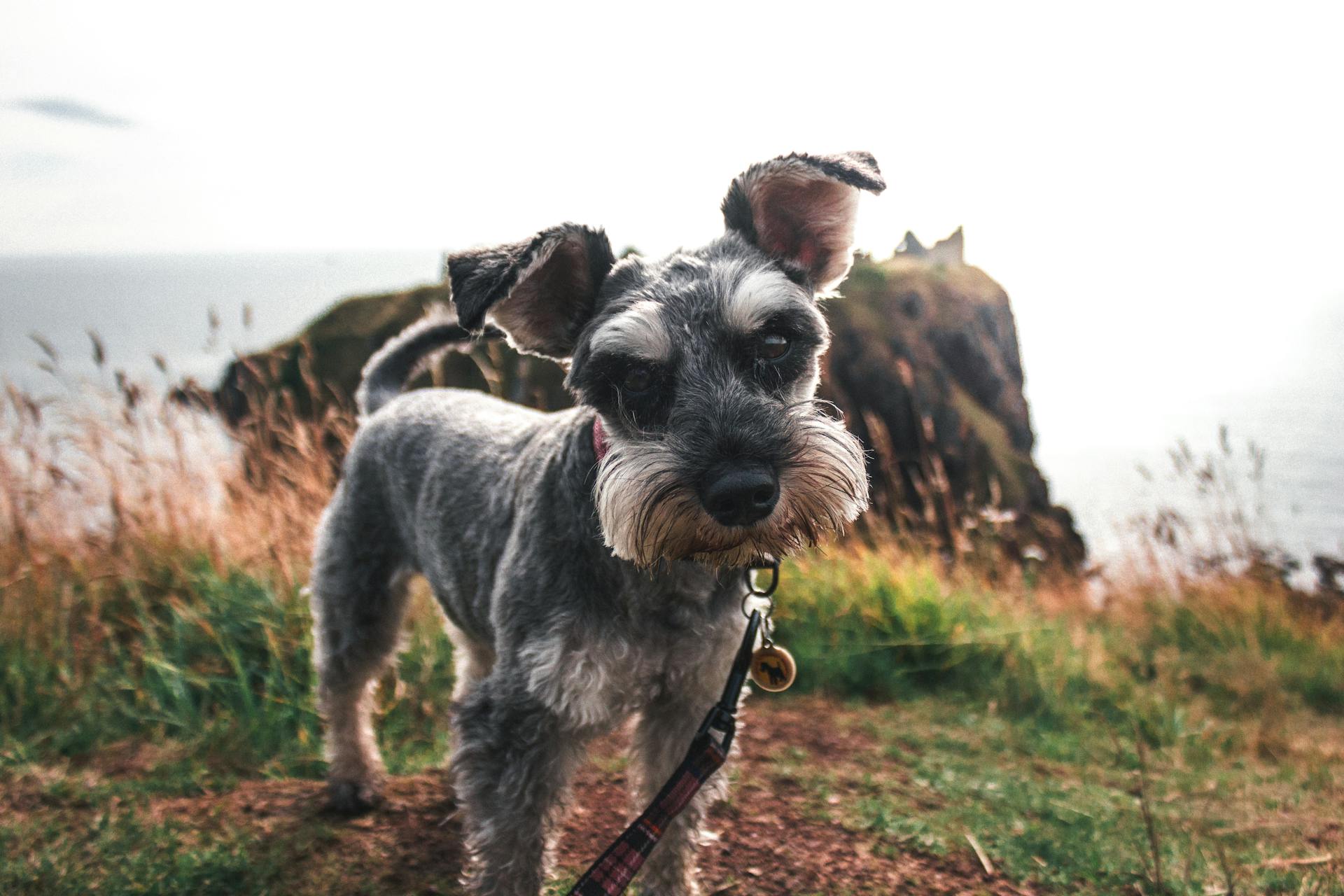
Some Standard Schnauzers may suffer from skin allergies, leading to excessive licking and scratching. This is often due to sensitive skin, which can cause discomfort for the dog.
Heart conditions, specifically dilated cardiomyopathy, are a common concern for Standard Schnauzers. This condition causes the heart to become large, thin, and weak.
Here are some of the health issues that may affect Standard Schnauzers:
- Hip dysplasia
- Eye disorders (cataracts, progressive retinal atrophy)
- Hypothyroidism
- Hemophilia
- Bladder stones
Responsible breeders will test their breeding stock for hip and eye problems before breeding. They may also choose to health test their animals, but this is not always the case.
The cost of OFA testing for hip dysplasia can be relatively high (about $150-200 USD per dog per year). However, responsible buyers should only choose puppies from a litter where both parents have current OFA test certificates and scores of "excellent", "good", or "fair".
Cons
Standard Schnauzers can be a handful if not properly cared for. They require plenty of mental engagement to prevent boredom and destructive behavior.
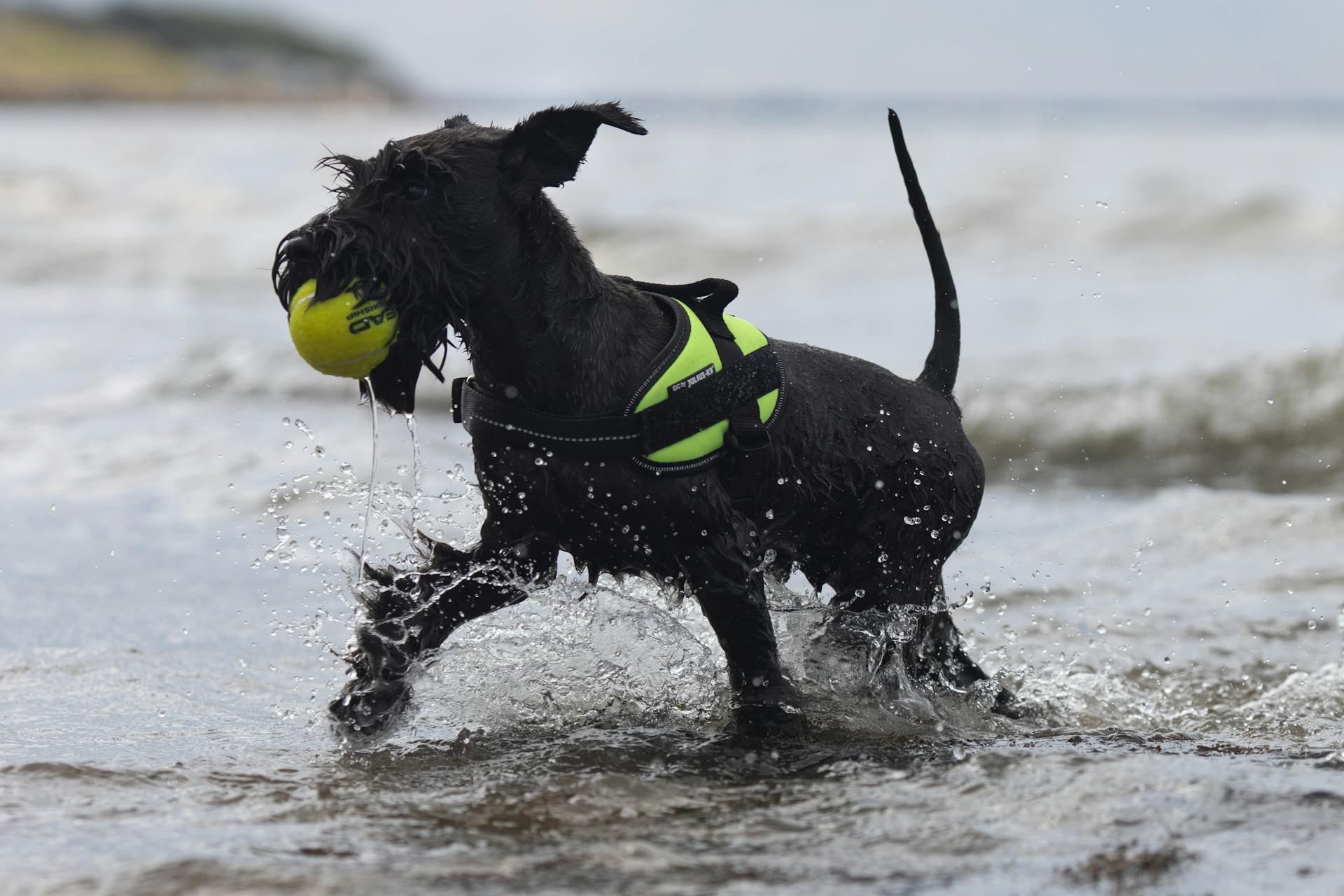
Their independent nature means they need consistent guidance and training from an early age. This includes regular exercise and activities that challenge their minds, such as obedience training or agility sports.
If you're considering bringing a Standard Schnauzer into your life, be aware that they can become protective if not socialized well. This requires careful introduction to new people, animals, and environments to help them develop good manners.
Regular grooming sessions are also essential for this breed, which needs regular visits to the groomer to prevent matting and tangling of their distinctive coat.
Here's a quick rundown of some key cons to consider:
- Requires plenty of mental engagement
- Can become protective if not socialized well
- Needs regular visits to the groomer
If you're up for the challenge, a Standard Schnauzer can be a loving and loyal companion. But it's essential to understand their needs and provide them with the care and attention they require.
Size and Growth
Standard Schnauzers are working dogs at heart and their physique shows it - they're built for action! Males weigh between 35 to 50 pounds and stand around 18.5 to 19.5 inches tall, while females are slightly smaller, weighing 30 to 45 pounds and standing at 17.5 to 18.5 inches.
Some Standard Schnauzers can be quite small, even smaller than Miniature Schnauzers! It's not uncommon for a female Standard Schnauzer to be the same size as a Miniature Schnauzer.
At six months old, your Standard Schnauzer should be approaching their adult weight, but they still have some growing to do. Females typically weigh between 22.5 to 38.25 pounds and males between 26.25 to 42.5 pounds at this age.
For another approach, see: Are Miniature Schnauzers Good Dogs
Appearance
Standard Schnauzers are distinguished by their long beards and eyebrows.
Their coats come in two main colors: pepper and salt, and less commonly black.
The hair coat on a Standard Schnauzer's body is stiff and wiry, similar to that of other wirehaired breeds.
This type of coat will perpetually grow in length without properly shedding.
Dog Size Prediction
At 4 months old, a Standard Schnauzer can weigh anywhere from 15 to 22.5 pounds for females and 17.5 to 25 pounds for males.
Their growth will slow down at this point, but it's not uncommon for puppies to have a growth spurt later on.
A unique perspective: German Shorthaired Pointer Weight Chart
Most dogs are close to their adult weight by six months old, with females weighing between 22.5 to 38.25 pounds and males weighing between 26.25 to 42.5 pounds.
However, predicting a dog's adult weight is typically pretty easy at four months of age, as smaller dogs tend to stay on the smaller side while larger dogs will probably stay large.
The average male Standard Schnauzer weighs 35 to 50 pounds and stands around 18.5 to 19.5 inches tall, while females weigh slightly less than 30 to 45 pounds and stand at around 17.5 to 18.5 inches.
It's worth noting that some female Standard Schnauzers are not much larger than Miniature Schnauzers, so don't expect your dog to be bigger than a Miniature Schnauzer, especially if they're a female.
Take a look at this: Bernese Mountain Dog 6 Months
Puppies and Adoption
If you're looking for a standard schnauzer puppy, expect to pay between $1,500 and $2,700 from a breeder.
Adopting a standard schnauzer can be a great way to start years of happy dog companionship. Check with shelters or rescue groups in your area, as well as regional and national rescue organizations that have been set up to help displaced schnauzers find a fresh start.
A fresh viewpoint: Breeds of Dogs That Start with H
When searching for a breeder, you may need to join a waiting list for the perfect pup, so be patient and do your research carefully.
To find a reputable breeder, check out the Standard Schnauzer Club of America Breeder Listing or the American Kennel Club Breeder Listing.
- Standard Schnauzer puppies are the most rambunctious version of these energetic dogs.
- They need consistent, positive guidance to understand who to trust and how to interact with others.
If you're considering an adult dog from a shelter or rescue group, many health and behavior problems in standard schnauzers won't be apparent until later in life.
General Information
The Standard Schnauzer is a brilliant and athletic breed with near-limitless potential.
They are highly intelligent dogs that require regular exercise to keep them happy and healthy.
With their loyalty and love for their family, they make great companions for active families who can devote time to them.
Three Little-Known Facts
Here are three little-known facts about General Information that you might find interesting.
Did you know that the concept of time zones was first introduced in 1883? This change revolutionized the way people communicated and conducted business across different regions.
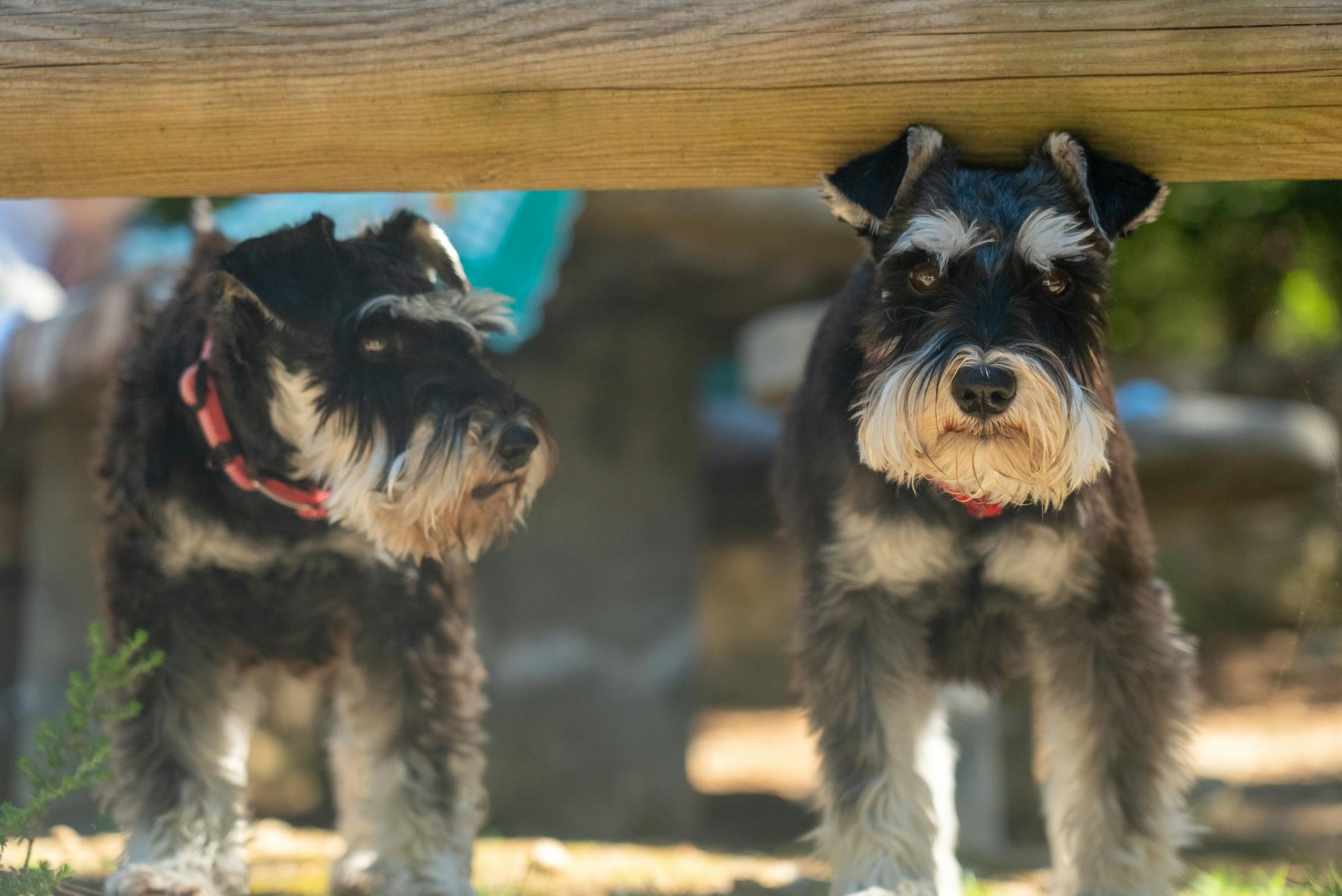
The average person spends around 2 hours per day checking their phone, which is a significant amount of time considering other daily activities like eating or sleeping.
General Information reveals that the world's largest living organism is actually a fungus called Armillaria ostoyae, covering over 2,200 acres in Oregon, USA.
It's worth noting that this massive fungus is estimated to be around 2,400 years old, which is even older than some of the oldest civilizations on Earth.
Contents
The Standard Schnauzer is a versatile breed with a rich history and distinct characteristics. They excel at obedience, agility, tracking, herding, therapy work, and even schutzhund in Germany.
Their popularity varies across regions, with Europe being their stronghold but North America not quite embracing them as widely. In the US alone, only around 540 Standard Schnauzer puppies are registered by the American Kennel Club each year - a far cry from the ~100,000 Labrador Retriever puppies registered annually.
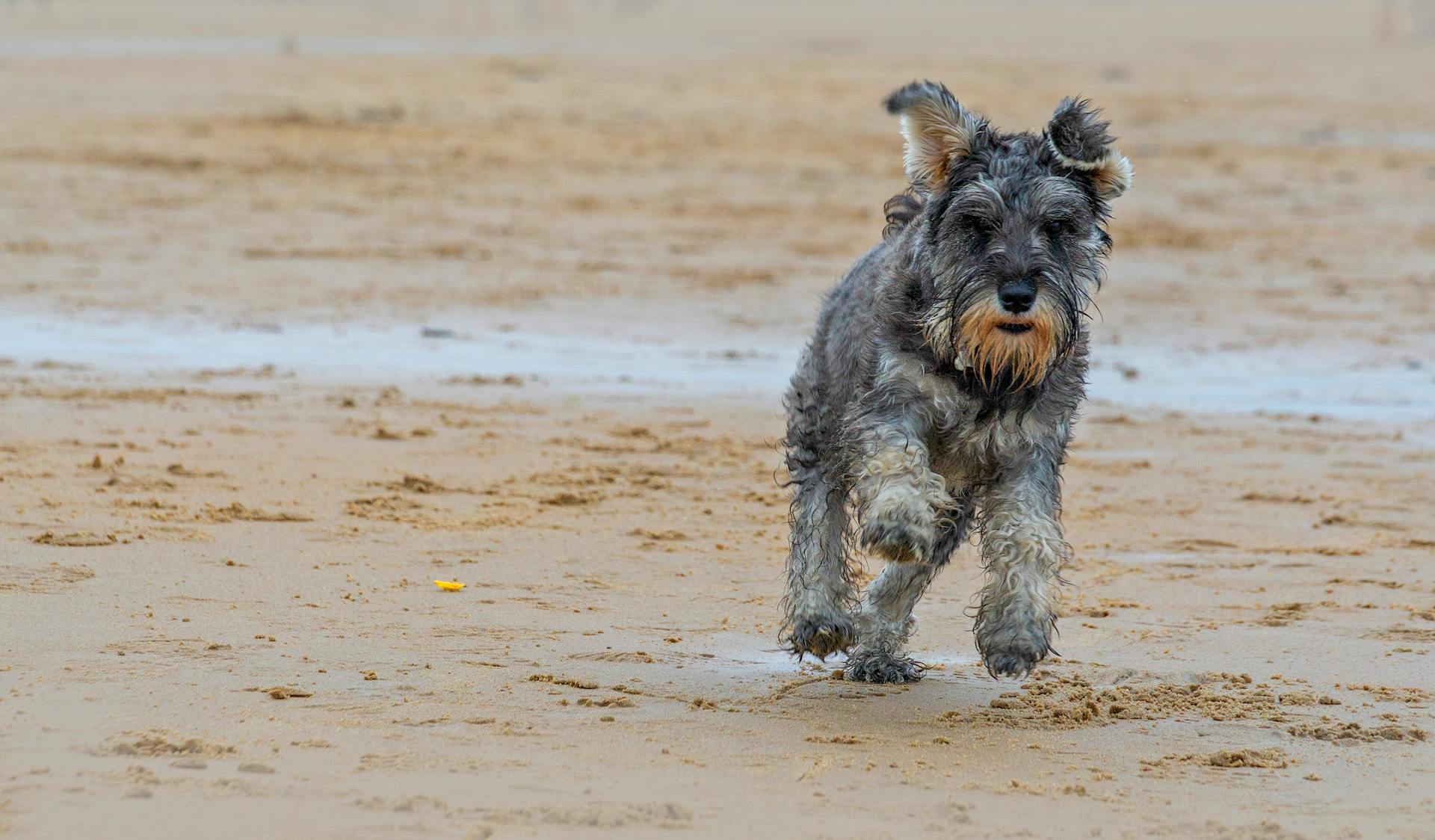
To understand this breed better, let's break down its key aspects into manageable chunks. Here's an overview of what you can expect:
- History: The Standard Schnauzer has a rich history, but we'll dive deeper into that later.
- Appearance: We'll explore their physical characteristics soon.
- Care: This includes grooming, exercise, and living arrangements.
- Temperament: Their personality traits are shaped by their breeding and purpose.
- Health: As with any breed, there are potential health concerns to be aware of.
- Famous Schnauzers: We'll look at notable Standard Schnauzers that have made a name for themselves.
This list should give you a solid foundation for understanding the intricacies of the Standard Schnauzer. By exploring each aspect, you'll gain a deeper appreciation for this remarkable breed and their unique qualities.
Final Thoughts
If you're willing to put in the time and effort, a Standard Schnauzer can be an incredibly rewarding companion.
Their near-limitless potential makes them a great fit for active families who are looking for a loyal friend.
You'll need to be prepared for their intelligence to sometimes lead to mischief, but with patience and consistency, you can help them reach their full potential.
A devoted family will find that the Standard Schnauzer's love is unwavering.
Dogs as Pets
If you're considering getting a Standard Schnauzer as a pet, here are some things to keep in mind.
You can expect to pay between $1,500 to $2,700 for a Standard Schnauzer puppy from a breeder.
Adopting a Schnauzer can be a great option too - just check with local shelters or rescue groups in your area.
Regional and national rescue organizations have also been set up to help displaced Schnauzers find new homes.
If you're looking for a breeder, research them carefully and be prepared to join a waiting list.
Standard Schnauzers are one of the best breeds for families - they show affection to everyone in the home and love to be part of the action.
They make great companions for kids due to their perfect blend of playfulness, restraint, and tolerance.
As watchdogs, Standard Schnauzers are highly vigilant and effective at sounding the alarm with a purposeful bark.
With ongoing effort from owners, Standard Schnauzers can thrive as trainable problem solvers.
If neglected, however, they may become destructive, rowdy, and disobedient - so be prepared to devote time to exercise, training, and bonding.
Here are some resources for finding a reputable breeder or rescue organization:
- Standard Schnauzer Club of America Rescue
- Schnauzer Rescue Resource
- Standard Schnauzer Club of America Breeder Listing
- American Kennel Club Breeder Listing
Frequently Asked Questions
Do Standard Schnauzers bark a lot?
Standard Schnauzers are generally quiet dogs with minimal barking, making them a great choice for those who value a peaceful home. They may alert you to potential threats, but excessive barking is not typically an issue.
Can Standard Schnauzer be left alone?
Standard Schnauzers require constant companionship and cannot be left alone for extended periods. They need regular interaction and exercise to stay happy and healthy.
Are standard schnauzers cuddly?
Yes, Standard Schnauzers are known for their affectionate nature and love to show physical affection to family members. They make great cuddle buddies for those who appreciate a playful yet gentle companion.
What is the difference between a miniature schnauzer and a Standard Schnauzer?
Miniature Schnauzers and Standard Schnauzers differ in size, with Standards being larger. They also have distinct temperaments, with Standards often being more stubborn during training
Sources
- https://www.thesprucepets.com/standard-schnauzer-dog-breed-profile-4783185
- https://animals.fandom.com/wiki/Standard_Schnauzer
- https://spiritdogtraining.com/growth-chart-calculator/standard-schnauzer/
- https://www.dogster.com/dog-breeds/standard-schnauzer
- https://www.embracepetinsurance.com/dog-breeds/standard-schnauzer
Featured Images: pexels.com
